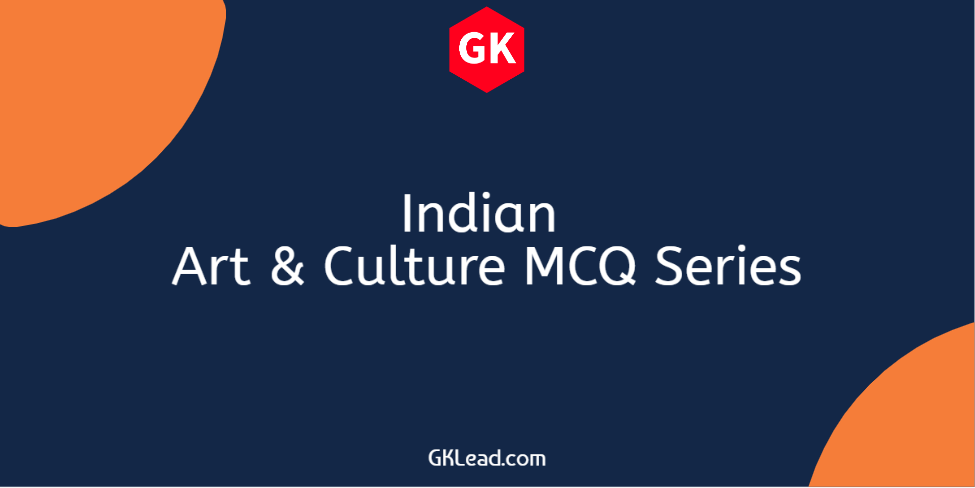Indian Art & Culture MCQ Set-15
Bhakti Movement MCQ for competitive examinations in India such as UPSC, SSC CGL, SSC CHSL, NDA, State PSC, Police recruitment and various government job recruitment examination by the Government of India, PSUs and the state Governments in India.
Q.1 Bhakti Movement originated in which of the following centaury?
A. 1st centaury CE
B. 2nd centaury CE
C. 7th centaury CE
D. 11th centaury CE
Answer: C. 7th centaury CE
Note: The Bhakti movement originated in South India during the seventh to eighth century CE, spread northwards from Tamil Nadu through Karnataka and gained wide acceptance in fifteenth-century Bengal and northern India.
Q.2 Mirabai, one of the most celebrated women Bhakti saint composed poems primarily related to which of the following Hindu god?
A. Krishna
B. Rama
C. Durga
D. Shiva
Answer: A. Krishna
Q.3 Which of the following is CORRECT during the early period of Bhakti Movement?
I. Alvars were Tamil Hindu poet-saints who espoused devotion (bhakti) to Hindu god Vishnu.
II. Nayanars were Tamil Hindu poet-saints who espoused devotion (bhakti) to Hindu god Shiva.
II. Both Alvars and Nayanars were Tamil Hindu poet-saints who espoused devotion (bhakti) to Hindu god Shiva.
A. Only I
B. Only II
C. Only III
D. Both I & II
Answer: D. Both I & II
Q.4 Who among the following was a pioneer of the Vishishtadvaita school of Vedanta?
A. Ramanuja
B. Adi Shankara
C. Nimbarka
D. Vallabha
Answer: A. Ramanuja
Note: Nathamuni, Yāmuna and Ramanuja were most prominent scholar of Vishishtadvaita.
Q.5 Achintya Bheda Abheda (inconceivable one-ness and difference), a tradition of Vedanta was founded by who among the following?
A. Chaitanya Mahaprabhu
B. Adi Shankara
C. Nimbarka
D. Vallabha
Answer: A. Chaitanya Mahaprabhu
Note: Achintya Bheda Abheda (inconceivable one-ness and difference), founded by Chaitanya Mahaprabhu (1486–1534 CE), propagated by Gaudiya Vaishnava.
Q.6 Vallabha founded which of the following school of Vedanta?
A. Advaita
B. Dvaita
C. Suddhadvaita
D. None of these
Answer: C. Suddhadvaita
Note: Shuddadvaita is the “purely non-dual” philosophy propounded by Vallabhacharya.
Q.7 Who among the following is credited for consolidating the doctrine of Advaita Vedanta?
A. Gaudapada
B. Adi Shankaracharya
C. Vallabha
D. Nimbarka
Answer: B. Adi Shankaracharya
Q.8 Which among the following is not included in the Prasthanatrayi, the reliable three sources of knowledge as per Vedanta?
A. Bhagavad Gita
B. Brahma Sutra
C. Upanishads
D. Bhagavad Purana
Answer: D. Bhagavad Purana
Note: As per the Vedanta philosophy, Prasthanatrayi or the thee reliable three sources of knowledge are Bhagavad Gita: the practical texts, Brahma Sutra: the logical texts or axioms of logic and Upanishads: starting point or axioms of revelation.
Q.9 Which of the following is not a metaphysical category of the Vedanta philosophy?
A. Brahman
B. Atman
C. Prakriti
D. Naraka
Answer: D. Naraka
Note: Vedanta philosophy discusses three fundamental metaphysical categories, there are: Brahman: the ultimate reality, Atman: the individual soul or self and Prakriti: the ever changing physical world, body or matter.
Q.10 Which among the following is NOT a primary scripture of the Bhakti Movement?
A. Bhagavad Gita
B. Bhagavad Purana
C. Padma Purana
D. Brahma Sutra
Answer: D. Brahma Sutra
Note: The scriptures of the Bhakti movement include the Bhagavad Gita, Bhagavata Purana and Padma Purana.
List of Indian Art & Culture MCQ sets from GKLead.com
- Indian Art & Culture MCQ Set-1
- Maurya Empire Culture MCQ Set-2
- Gupta Empire Culture MCQ Set-3
- Gupta Empire Culture MCQ Set-4
- Gupta Empire Art MCQ Set-5
- Ancient Indian Art MCQ Set-6
- Ancient Indian Art MCQ Set-7
- Medieval India Culture MCQ Set-8
- Indian Art & Culture MCQ Set-9
- Indian Classical Music MCQ Set-10
- North East India Festival MCQ
- South Indian Festival MCQ-12
- Chola Empire Art MCQ Set-13
- Mughal Empire Art MCQ Set-14
- Bhakti Movement MCQ Set-15
- Bhakti Movement MCQ Set-16
- Bhakti Movement MCQ Set-17
- Modern Art and Culture MCQ Set-18
- Indian Art & Culture MCQ Set-19
- Ancient Indian Art MCQ Set-20

